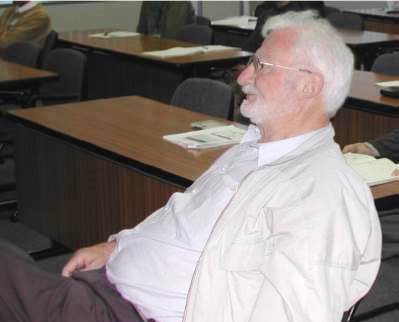All issues

Successor
Volume 34, Issue 10
Displaying 1-11 of 11 articles from this issue
- |<
- <
- 1
- >
- >|
Preface
-
Masaharu SHIRATANI2013 Volume 34 Issue 10 Pages 519
Published: October 10, 2013
Released on J-STAGE: October 20, 2013
JOURNAL FREE ACCESSDownload PDF (194K)
Special Issue: Plasma Processing of Nanomaterials
-
Masaharu SHIRATANI, Kazunori KOGA, Giichiro UCHIDA, Hyunwoong SEO, Nah ...Article type: Review
2013 Volume 34 Issue 10 Pages 520-527
Published: October 10, 2013
Released on J-STAGE: October 20, 2013
JOURNAL FREE ACCESSThis paper reviews production of nanoparticles using low pressure reactive plasmas and its application to quantum dot sensitized solar cells. For the method, nanoparticles of several nm in size with a small size dispersion are produced in gas phase using reactive plasmas, and then the nanoparticles and radicals are co-deposited on a substrate. This method realizes one-step deposition of nanoparticle composite films in a controllable way. View full abstractDownload PDF (1588K)
View full abstractDownload PDF (1588K) -
Kouichi ONO, Hirotaka TSUDA, Nobuya NAKAZAKI, Yoshinori TAKAO, Koji ER ...Article type: Current Topic
2013 Volume 34 Issue 10 Pages 528-534
Published: October 10, 2013
Released on J-STAGE: October 20, 2013
JOURNAL FREE ACCESSAtomic- or nanometer-scale surface roughness has become an issue to be resolved in the fabrication of nanoscale ULSI devices, because the roughness at feature sidewalls and bottom surfaces is responsible for the variability in transistor performance. This paper presents a numerical and experimental study of surface roughening during plasma etching of Si in Cl2, with emphasis being placed on modeling, analysis, and control of plasma-surface interactions concerned. A three-dimensional atomic-scale cellular model (ASCeM-3D) based on Monte Carlo (MC) algorithm exhibited nanoscale surface roughening and rippling in response to ion incidence angle onto surfaces. Experiments were conducted to demonstrate the validity of our ASCeM-3D model, and to investigate how to suppress and/or control the formation of surface roughness and ripples during plasma etching, where a classical molecular dynamic (MD) simulation for Si/Cl and Si/SiCl systems was also invoked to further understand atomistic mechanisms concerned. View full abstractDownload PDF (4025K)
View full abstractDownload PDF (4025K) -
Masaaki NAGATSU, Enbo YANG, Han CHO, Akikazu SAKUDO, Kazuyoshi IKUTAArticle type: Current Topic
2013 Volume 34 Issue 10 Pages 535-540
Published: October 10, 2013
Released on J-STAGE: October 20, 2013
JOURNAL FREE ACCESSIn the present study, we have carried out the study to understand the interaction between the plasma and nanostructured materials. The main research subjects are to fabricate nano-sized particles by using dc arc discharge, to modify their surfaces of nanoparticles or nano-structured materials by using plasma chemical modification, and to immobilizethe biomolecules onto the surface of nanoparticles for bio- and medical application. Immobilization of the antibody of influenza virus onto the surface of aminated magnetic nanoparticles has been carried out for aiming at developing the feasibility of the selective detection of virus. The significant enhancement of condensation rate of influenza A type virus was confirmed by magnetic collection of antibody-immobilized magnetic nanoparticles. The result suggests a feasibility of the present method for selective influenza virus detection. View full abstractDownload PDF (1756K)
View full abstractDownload PDF (1756K) -
Kazuo TERASHIMA, Sven STAUSSArticle type: Current Topic
2013 Volume 34 Issue 10 Pages 541-546
Published: October 10, 2013
Released on J-STAGE: October 20, 2013
JOURNAL FREE ACCESSIn these days, plasmas generated in high-density medium, such as high-pressure gas and liquid, have received much attention to materials processing, especially nanomaterials synthesis. In this paper, the current states of the research of plasmas generated in supercritical fluids, namely supercritical fluid plasmas, such as its generation, characterization and application to the synthesis of nanomaterials are reviewed. Especially, we focus on preparation of various carbon nanomaterials, such as carbon nanotube and diamondoids (diamond molecules) by supercritical plasmas near the critical points, in which the density fluctuation caused by the supercritical condition close to critical points might promote the formation of such carbon nanostructured materials. This paper demonstrates the effectiveness of supercritical fluid plasma as high-performance materials processing, such as high-rate and low-temperature, and non-equilibrium processing. View full abstractDownload PDF (1971K)
View full abstractDownload PDF (1971K) -
Tatsuru SHIRAFUJI, Nagahiro SAITO, Osamu TAKAI, Fumiyoshi TOCHIKUBO, K ...Article type: Current Topic
2013 Volume 34 Issue 10 Pages 547-552
Published: October 10, 2013
Released on J-STAGE: October 20, 2013
JOURNAL FREE ACCESSThis paper describes historical overview and recent activity on “plasma electrochemistry”, which involves materials processing with plasmas in contact with liquids. Nano-materials synthesis and organic-pollutant decomposition are the most active application areas. The most important part of the plasma electrochemistry is the plasma/liquid interface. The physicochemical processes near the plasma/liquid interface have been gradually clarified through experiments and numerical simulations. These are briefly described in this paper together with future issues for understanding effects of electric double layer and nano-scale steep density gradient. View full abstractDownload PDF (969K)
View full abstractDownload PDF (969K)
Planning Series
Surface Science for Energy Issues
-
Hiroshi INOUE2013 Volume 34 Issue 10 Pages 553-554
Published: October 10, 2013
Released on J-STAGE: October 20, 2013
JOURNAL FREE ACCESSDownload PDF (815K)
Science Café
Research Abroad
-
Carmen PEREZ LEON2013 Volume 34 Issue 10 Pages 555-556
Published: October 10, 2013
Released on J-STAGE: October 20, 2013
JOURNAL FREE ACCESSDownload PDF (567K)
Qualifying Examination for Surface Science Engineers
-
2013 Volume 34 Issue 10 Pages 557-558
Published: October 10, 2013
Released on J-STAGE: October 20, 2013
JOURNAL FREE ACCESSDownload PDF (2528K)
News & Trends
-
2013 Volume 34 Issue 10 Pages 559
Published: October 10, 2013
Released on J-STAGE: October 20, 2013
JOURNAL FREE ACCESSDownload PDF (179K)
Memorial
-
Tomihiro HASHIZUME2013 Volume 34 Issue 10 Pages 560
Published: October 10, 2013
Released on J-STAGE: October 20, 2013
JOURNAL FREE ACCESSDownload PDF (327K)
- |<
- <
- 1
- >
- >|

